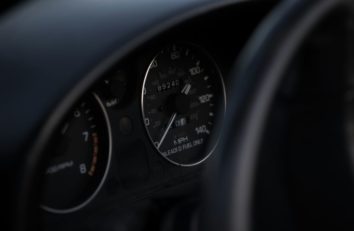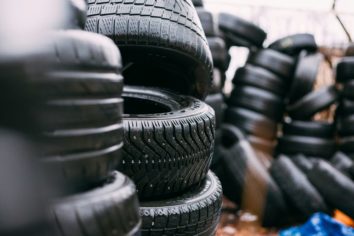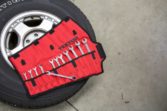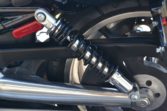Classic American Cars: A Comprehensive Guide to Automotive Icons

Introduction
When it comes to classic cars, few can match the timeless allure and iconic status of American automobiles. From the roaring muscle cars of the 1960s to the elegant cruisers of the 1950s, classic American cars have captivated car enthusiasts around the world. In this article, we will delve into the world of classic American cars, exploring their history, types, popularity, and unique characteristics. Join us on this journey through automotive history as we celebrate the golden age of American automobiles.
I. Overview of Classic American Cars

Classic American cars are vehicles that were built in the United States during the mid-20th century, particularly from the 1920s to the 1970s. These cars are known for their distinctive design, powerful engines, and cultural significance. Their timeless appeal has made them highly sought after by collectors and enthusiasts worldwide.
II. Types of Classic American Cars
Classic American cars can be categorized into various types, each representing a different era and style. Some of the most popular types include:
1. Muscle Cars: These high-performance vehicles were designed for straight-line acceleration and defined the automotive landscape in the 1960s and 1970s. The Ford Mustang, Chevrolet Camaro, and Dodge Challenger are prime examples of muscle cars.
2. Classic Cruisers: Representing the elegance of the 1950s and 1960s, classic cruisers were known for their stylish designs, chrome accents, and luxurious interiors. The Cadillac Eldorado, Chevrolet Bel Air, and Ford Thunderbird are emblematic of this era.
3. Hot Rods: Built for speed and style, hot rods were modified versions of classic American cars. They featured customizations such as lowered suspensions, engine modifications, and unique paint jobs. The Ford Model T, Chevrolet Chevelle, and Pontiac GTO are synonymous with hot rods.
III. Quantitative Measures of Classic American Cars
When it comes to classic American cars, several quantitative measures contribute to their appeal, including:
1. Horsepower: Classic American cars are known for their powerful engines, often boasting high horsepower ratings. These engines deliver the thrilling driving experiences that enthusiasts crave.
2. Production Numbers: The number of units produced for a particular classic American car can affect its rarity and, consequently, its market value. Limited production runs often drive up demand among collectors.
3. Auction Prices: Monitoring auction prices provides insights into the value and desirability of classic American cars. Prices realized at prestigious auctions, such as Barrett-Jackson and Mecum, reflect the market’s perception of these automotive treasures.
IV. Differences Between Classic American Cars
Although classic American cars share common characteristics, they can differ significantly in terms of design, engineering, and performance. These differences often stem from the manufacturers’ unique approaches and the era in which the cars were produced. For example:
1. Styling: Classic American cars from the 1950s boasted bold and flamboyant designs, characterized by chrome accents, sleek lines, and tail fins. In contrast, cars from the 1960s focused on a more muscular and aggressive aesthetic.
2. Engine Options: Manufacturers offered a wide range of engine options, catering to different driving preferences. From small block V8s to massive big block engines, classic American cars provided powertrains to suit various needs.
3. Handling: While some classic American cars prioritized straight-line speed and comfortable cruising, others embraced precision and corner-carving capabilities. The suspension setup, weight distribution, and tire selection influenced the handling characteristics of these cars.
V. Historical Overview of Pros and Cons
Classic American cars come with a rich history, boasting both advantages and disadvantages. Understanding these aspects will enable enthusiasts to make informed decisions. Some key considerations include:
1. Advantages:
– Timeless Design: Classic American cars exude a unique style that stands the test of time, making them highly desirable among collectors and enthusiasts.
– Engineering Ingenuity: These cars represent milestones in automotive engineering, showcasing technological advancements that were ahead of their time.
– Cultural Significance: Classic American cars embody the spirit of an era, representing cultural icons that symbolize the American Dream and the pursuit of freedom.
2. Disadvantages:
– Maintenance Challenges: Classic American cars often require specialized knowledge and parts, making maintenance and repairs more complicated and expensive.
– Fuel Efficiency: Due to their powerful engines and larger size, classic American cars tend to have lower fuel efficiency compared to modern vehicles.
– Safety Features: Classic American cars were produced before advanced safety features became standard, which means they may not provide the same level of protection as contemporary vehicles.
VI. Decisive Factors for Car Enthusiasts
When purchasing a classic American car, enthusiasts consider several crucial factors that influence their decisions:
1. Rarity: The rarity of a particular model can greatly increase its value and desirability among collectors.
2. Authenticity: Ensuring the car retains its original components and design elements adds to its historical and monetary value.
3. Condition: The overall condition of a classic American car, including its exterior, interior, and mechanical components, impacts its price and usability.
4. Historical Significance: Some classic American cars have historical significance, such as being associated with famous individuals or notable events, adding to their allure.
Conclusion
Classic American cars continue to captivate the imagination of car enthusiasts worldwide. Their timeless designs, powerful engines, and cultural significance make them coveted symbols of American automotive history. By understanding the various types, unique characteristics, and historical context of classic American cars, individuals can fully appreciate and celebrate these iconic vehicles. Whether you’re a seasoned collector or a passionate enthusiast, the allure of classic American cars is unlikely to fade anytime soon. So buckle up and embark on an exhilarating journey through the golden age of American automobile design and innovation.
FAQ
What are classic American cars?
What are some popular types of classic American cars?
What are the deciding factors for car enthusiasts when buying a classic American car?
Fler nyheter
Starthjälp av bil i Trollhättan
Introduction When it comes to classic cars, few can match the timeless allure and iconic status of American automobiles. From the roaring muscle cars of the 1960s to the elegant cruisers of the 1950s, classic American cars have captivated car enthusi...
Veronica Urena
18 april 2024
Cykelbutiker i Göteborg – din guide till stadens bästa köp
Introduction When it comes to classic cars, few can match the timeless allure and iconic status of American automobiles. From the roaring muscle cars of the 1960s to the elegant cruisers of the 1950s, classic American cars have captivated car enthusi...
Maja Bergman Lindberg
08 april 2024
Köpa däck i Stockholm – en guide för bilägare
Introduction When it comes to classic cars, few can match the timeless allure and iconic status of American automobiles. From the roaring muscle cars of the 1960s to the elegant cruisers of the 1950s, classic American cars have captivated car enthusi...
Maja Bergman Lindberg
07 april 2024
Upptäck skärgårdsidyllen Sandhamn med båt
Introduction When it comes to classic cars, few can match the timeless allure and iconic status of American automobiles. From the roaring muscle cars of the 1960s to the elegant cruisers of the 1950s, classic American cars have captivated car enthusi...
Veronica Urena
05 april 2024











